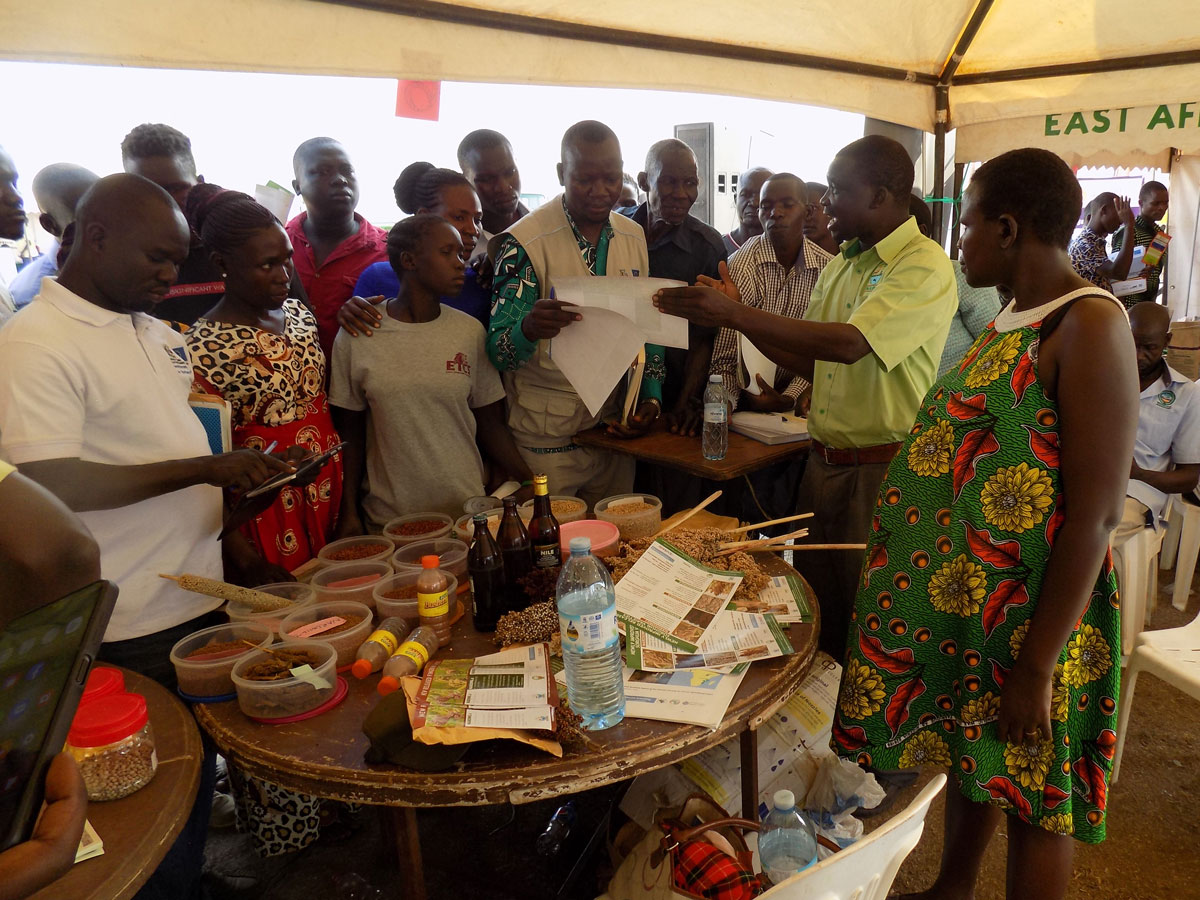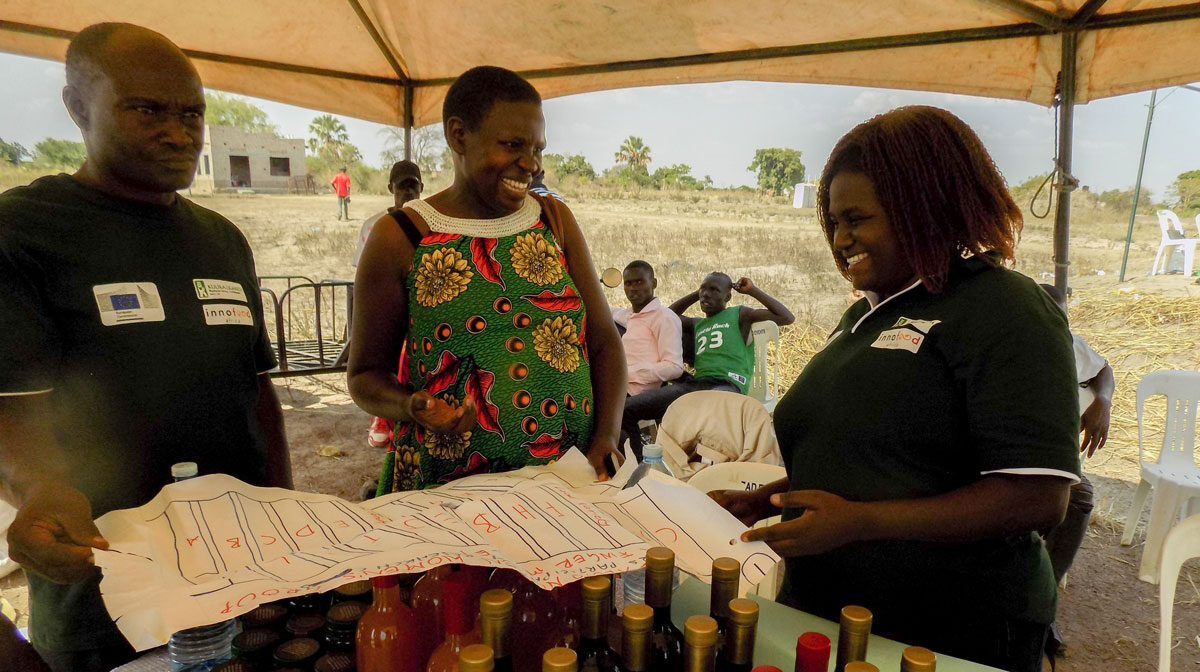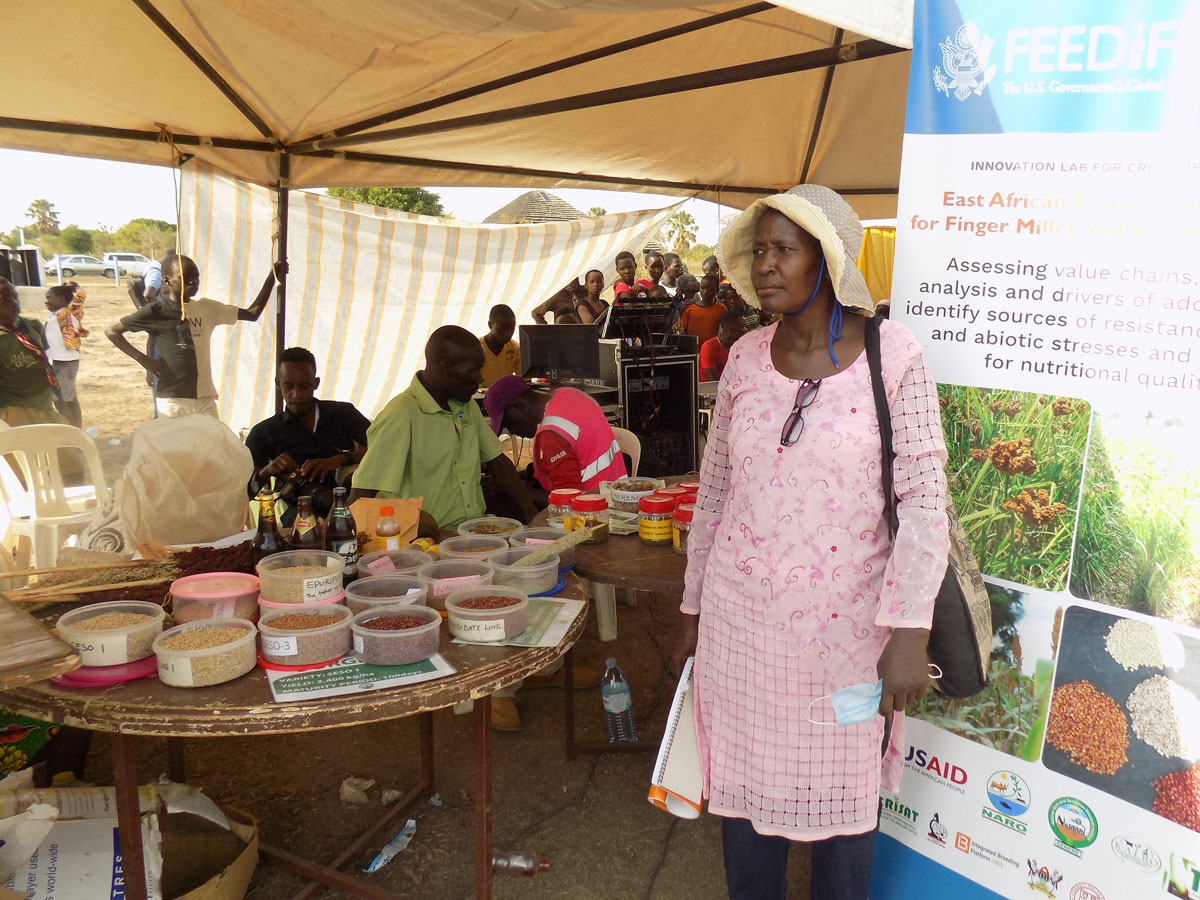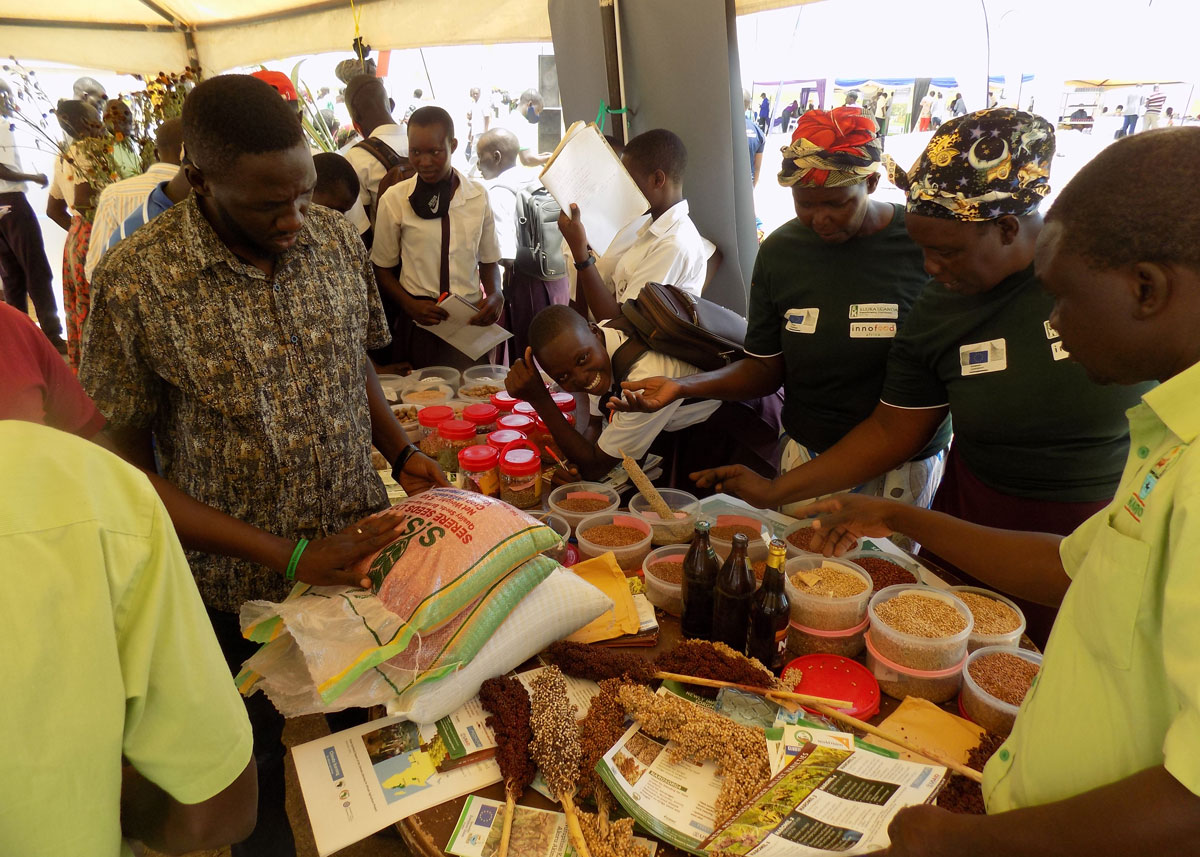More than 1,000 researchers, farmers and agricultural stakeholders from across the Soroti district in Uganda came together at the inaugural Eastern Agriculture Show organized by the National Agriculture Research Organization (NARO).
With a focus on enhancing agricultural production through practical farming education, the show provided an opportunity for participants to learn, discuss and exchange ideas on how to effectively use agro-ecological, technologies and practices in the semi-arid regions of Teso. The show took place at the Awoja Riverside Farm in Soroti from March 4-6.
In his opening remarks, the Resident District Commissioner of Awoja encouraged farmers to be good ambassadors in their home villages by ensuring the implementation of technologies and practices they learned about the event, and to pass the knowledge on the fellow farmers in their common goal to promote food security.
Farmers were trained on agronomic practices with an emphasis on row planting, recognizing that it is more advantageous compared to broadcasting because it takes little seed, and is very easy to weed, monitor and harvest. Farmers who have participated in trials were given an opportunity to share their experiences and learn new skills that could help their work progress.

Above: Scovia Adikini (right) discusses finger millet trials and lessons learned with farmers at the Eastern Agriculture Show. Photo provided by NaSSARI.
For example, farmers from Kulika, Uganda discussed how they utilized improved technologies and agronomic practices on their farmlands and associated districts in trials with the East African Center of Innovation for Finger Millet and Sorghum (CIFMS).
Following these trials, farmers expressed positive feedback on the improved seed from the National Semi arid Resources Research Institute (NaSARRI). 12 sorghum varieties were initially planted and monitored, and farmers identified their top 5 varieties. Participatory research measurements show that varieties have the potential to greatly increase farmers productivity compared to existing practices given their high yield, drought tolerance, early maturation and quality for consumption.
“This collaboration has boosted farmers’ access to varieties and trainings on agronomic practices and post-harvest handling,” said Caroline, a project officer in Kulika, Uganda. “Our participatory research methods are grounded in farmers’ valuable knowledge and expertise.”
CIFMS, hosted at NaSSARI under the leadership of Dr. Scovia Adikini, is supported by the Feed the Future Innovation Lab for Crop Improvement.
As participating farmers came together at the Eastern Agriculture Show, Dr. Scovia Adikini, principal investigator of CIFMS, encouraged participants to take advantage of the learning opportunities and to bring the gained knowledge back to their communities.
“Training opportunities benefit farmers and their local communities that face the challenges of recurrent drought and soil erosion,” said Adikini.

Above: Scovia Adikini (center) collaborates with colleagues from InnoFood Africa at the Eastern Agriculture Show. Photo provided by NaSSARI.
”“As farmers and scientists, we must all work together to address shared challenges — from agricultural productivity in semi-arid conditions to access to improved seeds.” - Scovia Adikini
The event allowed for small-scale farmers like Catherine Martha Atai to share their personal experiences and learn new lessons that could positively impact their efforts.
As a farmer with a dream to cultivate resilient finger millet, Catherine Martha Atai wasn’t sure where to start. With support from NaSARRI and CIFMS, Catherine was able to acquire an improved variety of finger millet, NAROMIL4.
Catherine was eager to get started, so she planted during a very dry season, instead of waiting for a rainy period. Despite the dry environment, the new variety germinated well. She weeded two times and yet the yield was too high.

Above: Catherine Martha Atai, a small-scale farmer in Uganda, shared her experience of growing an improved variety of finger millet (NAROMIL4) at the Eastern Agriculture Show. Photo provided by NaSSARI.
Catherine purchased seven kilograms, and after the splendid performance she managed to get seven and a half bags of finger millet, which is the equivalent to 130 kilograms per bag. Motivated by her success, Catherine sold some of the product to a nearby boarding school and a local brewery, and reserved some for the next season.
“I am excited by the promise of this improved variety and its drought tolerant, high yielding, non-lodging characteristics,” said Catherine. “I enjoyed learning from researchers and fellow farmers, and sharing my personal experience at the Eastern Agricultural Show.”
Regional partners are united to improve food security in East Africa

Uganda
National Semi arid Resources Research Institute (NaSARRI)
Kenya
Kenya Agricultural and Livestock Research Organization
Tanzania
Tanzania Agriculture Research Institute




